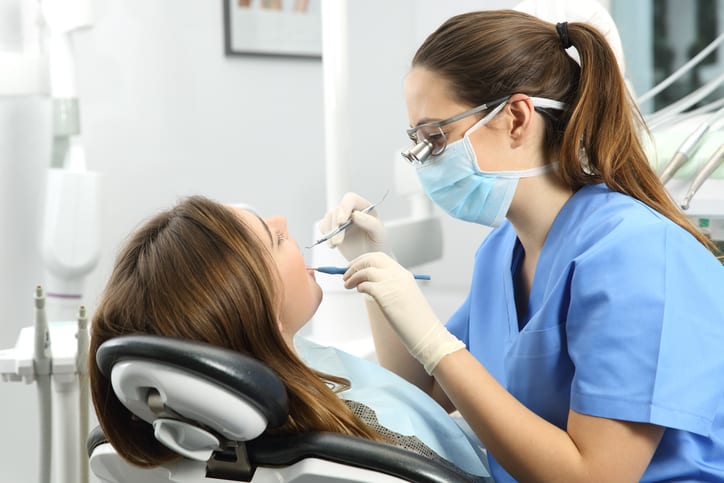Gingivitus: What It Is & How to Fight It
Gingivitis is the inflammation of gums and occurs with the build up of bacteria and plaque.
The inflammation causes irritation, redness and swelling and can lead to periodontitis.
If untreated, periodontitis can lead to tooth loss.

So now that you know what the general scope of gingivitis is, let's take a look at some of the signs of this gum disease.
"What are some signs of gingivitis?"
Many of these symptoms can be avoided by simply taking good care of your oral health by brushing, flossing and rinsing twice a day. Just sticking to this routine can help reverse the effects of the early stages of gingivitis and gum disease. Be sure to schedule 6-month dental check ups and cleanings to ensure that your teeth and gums are getting the care they need.

"What if I have Gingivitis? Who do I go to?"
The most important thing to do is to NOT ignore these symptoms - these aches and pains are a warning sign that they need to be taken care of and if ignored, can develop into advanced stage gum disease such as periodontitis. Once these signs emerge, head straight to your dentist and get your mouth examined. Gum disease can be prevented in the early stages, so it is important to deal with the warning signs as soon as they are spotted.
As for treatment, your dentist may suggest an improved daily at-home care regimen depending on the complications and what stage your gum disease is in. Treatment may include fixing damaged teeth and extra teeth cleanings. An at-home care regimen may include brushing twice a day with an electric toothbrush, flossing once a day, and regularly rinsing with an antiseptic mouth wash.

So in conclusion...
BRUSH YOUR TEETH TWICE A DAY AND FLOSS REGULARLY! It's easier to prevent gum disease rather than try to deal with it after it's been diagnosed.
The inflammation causes irritation, redness and swelling and can lead to periodontitis.
If untreated, periodontitis can lead to tooth loss.

So now that you know what the general scope of gingivitis is, let's take a look at some of the signs of this gum disease.
"What are some signs of gingivitis?"
- bright red or purple gums
- tender gums that may be painful to the touch
- bleeding from the gums when brushing or flossing
- halitosis, or bad breath
- inflammation, or swollen gums
- receding gums
- soft gums
Many of these symptoms can be avoided by simply taking good care of your oral health by brushing, flossing and rinsing twice a day. Just sticking to this routine can help reverse the effects of the early stages of gingivitis and gum disease. Be sure to schedule 6-month dental check ups and cleanings to ensure that your teeth and gums are getting the care they need.

"What if I have Gingivitis? Who do I go to?"
The most important thing to do is to NOT ignore these symptoms - these aches and pains are a warning sign that they need to be taken care of and if ignored, can develop into advanced stage gum disease such as periodontitis. Once these signs emerge, head straight to your dentist and get your mouth examined. Gum disease can be prevented in the early stages, so it is important to deal with the warning signs as soon as they are spotted.
As for treatment, your dentist may suggest an improved daily at-home care regimen depending on the complications and what stage your gum disease is in. Treatment may include fixing damaged teeth and extra teeth cleanings. An at-home care regimen may include brushing twice a day with an electric toothbrush, flossing once a day, and regularly rinsing with an antiseptic mouth wash.

So in conclusion...
BRUSH YOUR TEETH TWICE A DAY AND FLOSS REGULARLY! It's easier to prevent gum disease rather than try to deal with it after it's been diagnosed.
Comments
Post a Comment